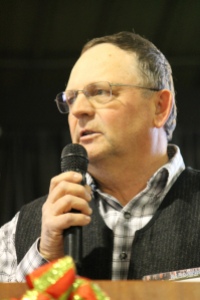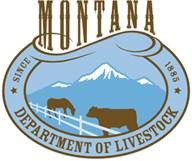New Digital Photography Book to Feature Ladies of Montana Ranching
 Helena, MT – “Ladies and Livestock: Life on the Ranch,” the second book in the Montana Family Ranching Series, from the Research and Education Endowment Foundation of the Montana Stockgrowers Association (REEF), is set to be released on October 1. The digital book is a pictorial explanation of Montana women and their roles in the ranching community.
Helena, MT – “Ladies and Livestock: Life on the Ranch,” the second book in the Montana Family Ranching Series, from the Research and Education Endowment Foundation of the Montana Stockgrowers Association (REEF), is set to be released on October 1. The digital book is a pictorial explanation of Montana women and their roles in the ranching community.
“Women are often described as the ‘backbone’ to the ranch and we want to capture what that means in this book,” said Lauren Chase, author and photographer.
Ladies and Livestock is leading the way in multimedia technology and storytelling as it will be released in digital format instead of print. Available in the Apple iBook store beginning October 1, 2014, readers will be able to download Ladies and Livestock to their iPads and flip through the vivid imagery with the swipe of their fingers.
This book features over 130 pages of stories, photographs and video features of the ladies who raise livestock, care for the land, and build their families’ legacies on Montana ranches. Not only are these Montana women working on the ranch, many have jobs in town, volunteer in their communities, and are involved in the legislation process of issues affecting agriculture.
Ladies and Livestock is the second in a series of book featured in the Montana Family Ranching Series. The first edition, Big Sky Boots, released in 2012, features the working seasons of the Montana cowboy and is available in print edition from the Montana Stockgrowers Association by visiting bit.ly/BigSkyBoots.
“This series is meant to help people understand what it takes to make a Montana ranch operate successfully and also, to show the wonderful ranch families that make it possible. Creating the book for the iPad is really exciting for us because we can reach new audiences much easier through digital means,” said Chase.
By utilizing the digital technology, “Ladies and Livestock” adds a new dimension to reading a book. Included on nearly 30 of the pages are video features that play with the touch of the finger. These videos show interviews of the ladies speaking on their ranch history, family life and how they feel about being part of Montana’s agriculture.
This book is a multimedia journey through the life of a woman on a Montana ranch. Not only can readers see photographs, but can hear the woman tell her own story and see the emotion on her face as she talks about how important her family is to her.
The book can be downloaded for $14.99 in the Apple iBook store by searching title: Ladies and Livestock. Proceeds from the sales of the book contribute to the Montana Stockgrowers Association’s Foundation to help support educational programs and scholarships for youth.
To learn more about this project and the author, visit www.mtbeef.org. You can also follow along with this story-telling project on MSGA’s Facebook, Twitter, Blog, Instagram and Pinterest pages.



 The Montana Beef Council recently hosted another successful pasture to plate tour for nearly twenty students pursuing a career as a Registered Dietitian. The tour was conducted in Nye, Montana with local rancher Noel Keogh where the attendees were able to experience first-hand where and how beef is raised.
The Montana Beef Council recently hosted another successful pasture to plate tour for nearly twenty students pursuing a career as a Registered Dietitian. The tour was conducted in Nye, Montana with local rancher Noel Keogh where the attendees were able to experience first-hand where and how beef is raised.


























